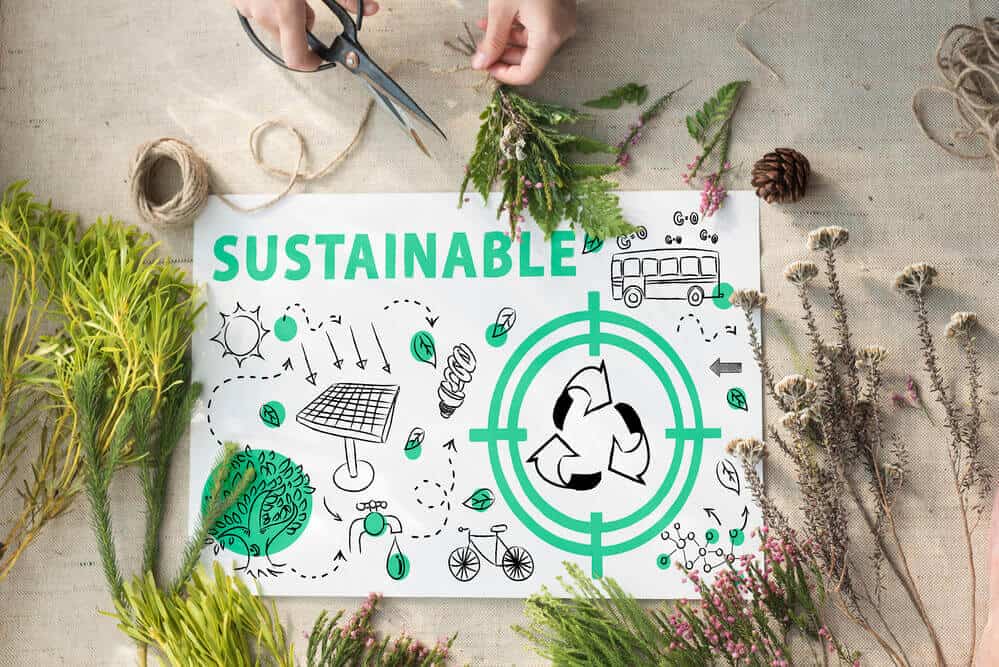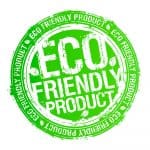Eco-friendly and sustainable are words that both describe something that does not harm the environment.
Eco friendly is often used by marketers as somewhat of a buzzword, and is a fairly general term.
Sustainable is a lot more specific and takes things a step further by indicating issues or activities that do not compromise the ability of future generations to meet their needs.
When it comes to the litany of environment-related adjectives in common usage, it can be confusing to really know what a description actually describes.
Do eco-friendly and sustainable even mean the same thing? This article will give a brief outline of the environmental context in which you will see these terms used, before diving into the meanings and key applications of each word.
Read on to find out the key pillars of sustainable development, and what sustainable means when it comes to society, the economy, and the environment.
We will also discuss what to be mindful of when you see eco-friendly applied to products and services.
Environmental context
Green, clean, ethical, eco-friendly and sustainable are just a few of the many environment-related words in use in modern speech.
Language concerning this topic typically revolves around human development and its effects on the environment, whether neutral or negative.
In almost every region of the planet, population growth, urbanization, overconsumption, deforestation and other areas of human development have, according to scientists and researchers, made it ‘increasingly hard for the world to feed itself’.
A 2016 report from the United Nations Environment Programme explained that if current trends in how we use natural resources continue, then “the world’s environment will continue to decline”.
We all have a responsibility as individuals and collectively to make choices that are clean, green or eco-friendly and that will be able sustain environmental systems for future generations.
In the corporate world, there is a push for businesses to take their Corporate Social Responsibility (CSR) seriously and shift to sustainable methods of production and growth.
At home, we can make eco-friendly choices every day by actively avoiding consuming or doing things that could disrupt the environment.
This article will discuss these aspects of what being eco-friendly and sustainable mean in terms of human activities and our impact on the environment.
Sustainable
According to the Oxford Learner’s Disctionary, the term sustainable involves ‘the use of natural products and energy in a way that does not harm the environment’.
However, the term often means more than that.
Taking the U.N.’s definition, given at the 1987 Brundt Commission, to be sustainable means that we meet current needs without compromising on future generations’ abilities to meet their needs.
In terms of the Earth’s environment, sustainable practices will work in harmony with existing ecological systems. Balance is key when it comes to sustainable development.
The three key areas of sustainable development include social, economical and environmental.
- Social development involves legislation and activities that protect people living within a society. Regulating industries and large corporations is important to limit air pollution, water contamination and other harmful effects that production can have on societies.
- Economic development is more challenging, as businesses often require incentives to put into action guidelines and sustainable practices. As consumers, we also have a role to play in taking control of our consumption and making informed choices.
- Environmental responsibility largely depends on the first two areas of economic and social sustainability. It also includes creating technologies that will benefit the planet or taking action on an individual level to make better informed purchases.
Eco-friendly
Eco-friendly means that something – a product, service or activity – does not do harm to the environment. The eco- comes from the latin root word ‘oeco’, which means ‘household’.
This root word is often used to signify ‘habitat,’ home’ or ‘Earth’. Knowing this, any word with the prefix eco- will typically relate to our habitat, the Earth.
In recent years, the term eco-friendly, alongside words like green, clean as well as eco-clothing and eco-product have come into common usage in everyday conversation.
You might hear about eco-friendly household habits and practices, including anything from choice of food ingredients, clothing and cleaning products to furniture, energy consumption and mode of transport.
Marketing and advertising used by companies and brands often identify their products, services or overall image as being eco-friendly to attract eco-conscious customers.
The liberal use of the word means that it cannot always be trusted to represent the full story of a product.
You may think that a cleaning product, for example, is not harmful to the environment because it is labelled as ‘eco-friendly’ on brand packaging.
However, it is important to be mindful that there are no certifications or standards to ensure that this is really the case.
Is eco-friendly and sustainable the same?
In short, eco-friendly and sustainable are not the same.
While they both are used to describe products, issues and activities that do not bring harm to the environment, they have different scopes of meaning.
Eco-friendly is a more general term often used in marketing and product packaging.
Sustainable is a term more specifically referring to practices that do not compromise the ability of future generations to meet their needs.
Green
Similar to eco-friendly, clean, ethical and several other words in common usage, the term green informs the reader that an activity or item is not going to harm the environment.
If it is green, it is environmentally friendly.
A litany of environment-related words
Eco-friendly and sustainable are just two of many environment-related words that are used anywhere from household product packaging, to the design and building of homes, to the governing principles and guidelines of intergovernmental organisations.
These two terms are not the same, even though they both describe a product or activity that does not harm the environment.
In summary, eco-friendly is a fairly general term often seen on product packaging and advertising, whereas sustainable indicates practices that not only do not cause harm to the environment, but also ensure the ability of future generations to meet their needs.


